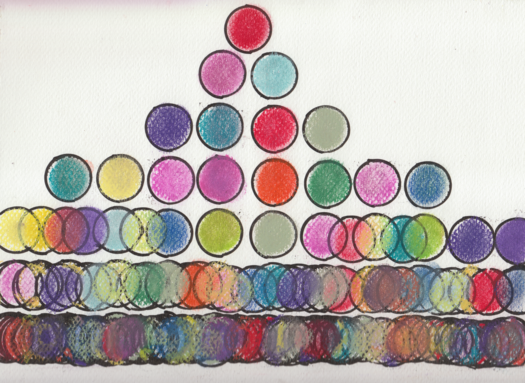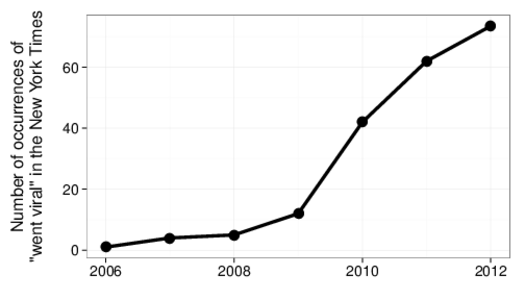This is Viral

If the nineteenth century French sociologist Gustav Le Bon were alive today, he’d probably be running a wildly successful viral marketing firm. Alas, Le Bon was a hundred years ahead of his time. In his influential work, “The Crowd: A Study of the Popular Mind,” Le Bon argues that, “the opinions and beliefs of crowds are specially propagated by contagion….Contagion is so powerful a force that even the sentiment of personal interest disappears under its action.” In the century since, this characterization of ideas and behaviors spreading like a disease through connected populations has been enshrined in dozens of mathematical models and hundreds of academic articles, and has provided speaking fees for more than a few viral marketing gurus. But is it really true?
While academics and non-specialists alike have discussed virality for decades, there is almost no direct evidence of such events. Historically, empirical support for such theories of viral adoption came largely from aggregate data. For example, one would track the sales of a new product over time and attribute periods of exponential growth to viral diffusion. For a more meta example, the graph below shows the number of occurrences of the phrase “went viral” in the New York Times over the last few years. Did “went viral” go viral in 2009? Maybe. Or maybe the mass media just popularized the phrase. When a product or idea rapidly becomes popular, it is often difficult to distinguish between adoption driven by some viral process, and adoption spurred by media coverage, advertising, or some other large broadcast mechanism.

“By tracing the propagation of over a billion news stories, pictures, and videos on Twitter, we found hundreds of elusive viral events, definitively establishing that viral diffusion, while rare, is real.”
The last few years, though, have been good to sociologists. The (viral?) growth of social media has led to an unprecedented opportunity to observe the diffusion of information up close and personal. In ongoing work with Ashton Anderson, Jake Hofman, and Duncan Watts, we analyze billions of diffusion events on Twitter, including the propagation of news stories, videos, images, and petitions. The plot below shows a sampling of what we find, with each of the six cascades depicting the diffusion of a particular URL on Twitter (e.g., a link to a specific video on YouTube). Each node represents an individual who tweeted the link, and the edges trace the link’s propagation from one person to the next.

In the upper left corner is the quintessential non-viral event: a pure broadcast, where all downstream adoptions (i.e., tweets of that URL) are directly attributable to a single source. The bottom right, though, is where things get really interesting. By tracing the propagation of over a billion news stories, pictures, and videos on Twitter, we found hundreds of these elusive viral events, definitively establishing that viral diffusion, while rare, is real.
The sampling of cascades above illustrates two additional points. First, we find remarkable diversity in the empirically observed structure of diffusion events. In contrast to prevailing tipping-point style theories of diffusion — in which events are either viral or not — we find a continuous transition from broadcast to viral. And second, despite the starkly different diffusion structures, all the cascades exhibit a rapid increase in popularity (indicated by the insets), highlighting the challenges in using aggregate data to infer the underlying propagation mechanism.
Returning to Le Bon’s characterization of crowds as a mindless mass primed for contagion, it seems he didn’t have it entirely wrong. On the one hand, as I’ve written about before in “This Post Won’t Go Viral”, the vast majority of diffusion events are far from viral. On the other hand, Justin Bieber — who single-handedly accounts for a non-negligible fraction of viral cascades — has, it appears, successfully squelched any ability to resist retweeting his selfies.
Illustration by Kelly Savage
